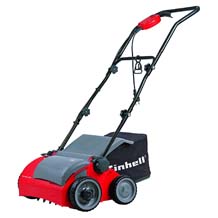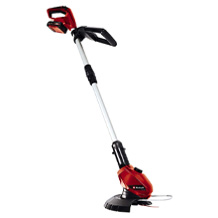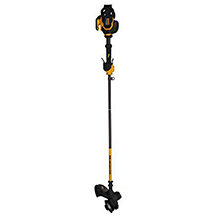Robot lawn mower purchasing advice: how to choose the right product
- What you need to know
- Robot lawn mowers cut your grass at the time and day of your choosing – they even charge themselves.
- Robotic mowers don’t collect the grass, they only cut the tip – the mulch they leave behind fertilises your lawn.
- Automatic mowers are easy to care for – just clean the blade each week and change it every 4-6 months.
- App connectivity lets you control the mower via your smartphone, tablet, or voice assistant.
- Robot lawn mowers are best for already neat lawns: they’re not suited for wild meadows and most models will struggle with steep gradients.
Automatic lawnmowing
From mid-March until October, gardeners have their hands full with sowing, planting, weeding and watering. Oh, and don’t forget mowing the lawn! For the lawn to be dense and lush, the grass needs to be cut regularly – but mowing even weekly is a chore, especially with a big garden. Enter robot lawn mowers, a solution to this recurring problem. These machines do your work for you, but there are even more reasons why you should consider buying one.
Why buy a robot lawn mower?
The main reason to buy a robot lawn mower is simple: it works independently. Once you’ve marked the lawn boundary using the cable provided (some models now don’t need wire) and programmed when you want the mower to cut, it will work all by itself. You don’t have to charge it either, it will automatically return to its charging station.
One crucial difference between robotic and conventional lawn mowers is that robotic mowers mulch. They don’t have a grass collector: instead, they just cut the tips of the grass and distribute it across the lawn. This mulch is great for lawn health and means that you’ll need less compost.
What is turf?
Turf is the top layer of grass and soil. Thanks to the grass’s roots, this layer holds firmly together and doesn’t erode. Only a few centimetres below the turf, subterranean life teems with micro-animals such as earthworms and bacteria.
Having time is vital when it comes to gardening. If you’re busy with work or family, mowing the lawn is often the last thing you want to do with the little time you have. If this sounds like you, then a robotic mower could be worth it – especially when you come home and can relax on your clean and tidy lawn.
Robot lawn mowers are also relatively quiet. Most models in our comparison produce between 60 and 75 dB when mowing. They’re not totally silent of course, but they aren’t as loud as an old rattling lawn mower. To put this in perspective, 65 dB is about as loud as a sewing machine or a TV on normal volume. Electric and petrol lawn mowers generally produce between 80 to nearly 100 dB – nearly as loud as an HGV lorry 5m away. When you get to around 100 dB, sound starts damaging your hearing. In the case of robotic lawn mowers, the only thing you hear is the whirring of the cutting blades.
The cost factor
Intrigued gardeners who have a look at what’s on offer will soon notice that these devices are far from cheap. Prices start at just around the $700 mark, rising up into the thousands at the top end. In comparison, conventional petrol and cordless electric mowers typically cost between $400 and $600 and corded electric models between $120 and $175. So, if you want a robotic lawn mower, it’s going to cost you considerably more. However, you can save in your energy bill – especially if you were considering a petrol lawn mower. Robotic machines are much smaller, use less energy, and its easy to replace any blunted blades yourself. Repair costs for a robot lawn mower are usually around $15 a year.
Advantages at a glance
- Time and work saver
- Relatively quiet
- Independent operation
- Energy efficient
- Minimal maintenance
What kind of lawns are suitable?
Each robotic lawn mower has a maximum area it can cover – the bigger the range, the more expensive the mower. At the bottom end of this range, mowers can cut a 250m² area. The latest top of the end models have ranges measured in thousands of metres squared.
Lawn sizes
- Small lawn: 200-350m²
- Medium lawn: 500-1000m²
- Large lawn: 1000m² upwards
Many modern robotic mowers can handle large areas. Flat lawns without winding passages are ideal for these devices. This said, they have sensors to help detect and avoid obstacles. If you need something for a complex and varied garden, then there are solutions available at the top end of the market. The same can be said for gradients – most robotic mowers don’t cope well with slopes, except for those from the critically acclaimed company Husqvarna. The technology is always improving, but, in general, if you’ve got steep parts of your garden you’ll have to mow them yourself, for now.
Tip
Robot lawn mowers are great at maintaining lawns that are already tidy, but not designed for wild or long grass.
If you’ve got multiple lawn sections to your garden, then go for a robot which has a multi-zone function.
How do they work?
Once activated, these small robot lawn mowers automatically cut grass in a predefined area to a predefined length. They are mulching, which means there’s no need to empty any grass collector – instead, the small cut bits of grass get spread across the lawn. Most models are powered by lithium-ion batteries. Charging is also automatic – before it runs out of juice, the robot will return to its charging station. If the lawn is already completely mowed, the robot will also automatically return to its station.
How do they know where to mow?
Generally, the robot’s mowing area is demarcated using a boundary cable – these can be laid on the ground or buried. The cable begins and ends at the charging station, running around the lawn perimeter. If you’re laying it at ground level then you need to use pegs, otherwise the cable can be laid about 2 inches (5cm) underground. To bury the cable, a spade is fine but there are special tools which can make things easier – a bit like a pizza cutter, they run over the lawn and lay the cable in the furrow.
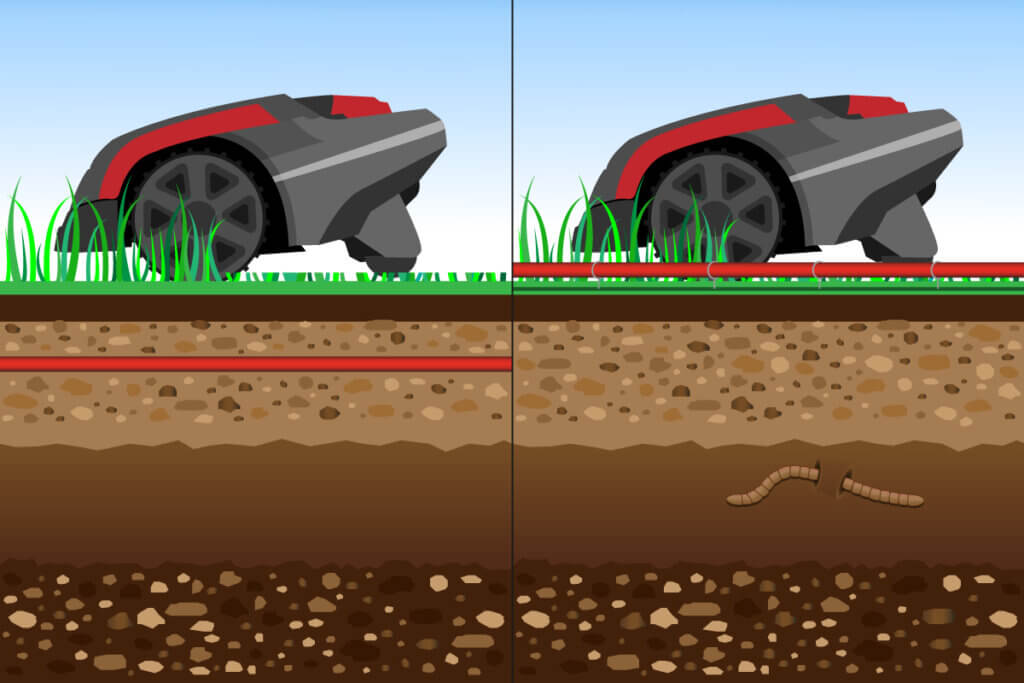
The advantage of burying the boundary cable is primarily aesthetic: generally, these cables are a couple of millimetres thick, so they do stick out even on lush lawns. Buried cables are great when scarifying the lawn, as there is no danger of damaging them with the scarifying tool. However, buried cables are also far less flexible to re-route if you want to extend your lawn or change where the mower cuts.
Make sure to run the cable around things like shrubs, trees, and garden ponds so that the robotic mower avoids them. You can buy additional cables if you don’t have enough – these aren’t manufacturer specific as the technology is the same in each one, so you can buy any brand you want. The only thing important here is to get a good quality cable. The plastic sheathing needs to be durable against soil acid and a little abuse with a rake.
A low voltage flows through the boundary wire, which is sufficient to create a magnetic field. The robotic lawnmower recognises this field and so only mows within the boundary. Incidentally, the strength of the magnetic field generated is comparatively low, so don’t worry about any health risks. Radiation pollution in the house, like from Wi-Fi, mobile phone networks or radio signals, is at a much higher level, but even those aren’t considered dangerous.
Grass edges on fences and walls
Many models don’t cut to the very edge of the lawn because of their design – they leave a small margin if they can’t drive over something like a fence. In these cases, you have to trim the edges yourself. Some models will only leave an edge of 2-2.5 inches (5-6cm), but with others it can be over 8 inches (20cm). Pay close attention to the specifics of the model you’re looking at, and, if necessary, consider laying curbs to solve the problem.
Cableless robotic mowers
Some robotic mowers don’t require the inconvenience of a boundary cable. Instead, they work using special lawn sensors to determine if they’re on grass or not. This all sounds great, with a simple setup, but the reality is that this will only work well for clearly demarcated gardens. For example, this kind of pathfinding would only recognise turf as being distinct from a flowerbed if the two are separated by boundary stones.
Without a fence, these sensor-pathfinding mowers would also cut the grass on your neighbour’s lawn. If your garden has some clearly demarcated features, then one of these mowers is a convenient option. If, however, you’d like to give the robot more precise instructions, then it is necessary to lay a boundary cable.
Mowing technology
Most robot lawn mowers cruise across the turf at a leisurely pace, between 2 and 5 km/h depending on the gradient and model. Whether the mower follows clean pre-set paths or cuts in randomised directions is dependent on how it is programmed. In general, there are three pathfinding types on the market:
- Free movement: the direction of the mower is randomised, comparable to how a sheep will graze here and there. As a result, the lawn will have a more natural look with no trace of the mower. Sometimes random tufts of grass are left uncut by chance.
- Orderly paths: the robot mows in parallel lines. The effect is similar to that of a football field, cut with stripes instead of looking like a homogenous green carpet.
- Spiral: the mower cuts in increasingly wide circles. This is particularly good for circular lawns as you can see how it is cut.

Not all models are able to cut in all styles – this depends on the device and manufacturer.
Modern navigation
Some robotic mowers are GPS-enabled. This has a couple of benefits. Firstly, the robot can use GPS to chart which parts of the lawn have been recently cut. Secondly, GPS can be used in conjunction with an app to check the robot’s location. This is especially useful in the event of theft.
Back to the charging station
If the robot’s battery is low, it will return to its charging station rather than just stopping somewhere on the lawn. To set up a charging station, you will need an outdoor power socket to permanently plug it in – the station both charges and communicates with the robot via radio signals. Ideally, the charging station should be somewhere sheltered from sun, wind, and rain – stone slabs or plastic are better than grass because otherwise the robot can get very muddy or even sink into the ground. Some models use a guide wire to find their way back to the charging station, but others don’t use one and instead drive back along the perimeter which is slightly slower.
Buying criteria
When you’re looking at the different models on the market, these are the most important factors to consider:
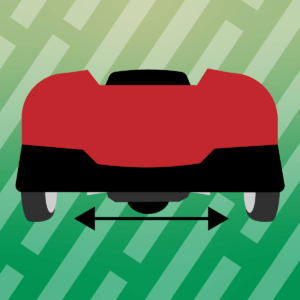
Cutting width
The wider the cutting width, the faster the robot will mow. Big, open lawns are great for wider devices. By the same coin, smaller, tighter gardens will be better suited to a robot which is less wide. In general, the width can range from 7-9.5 inches (17-24cm), but there are outliers especially on the top end.
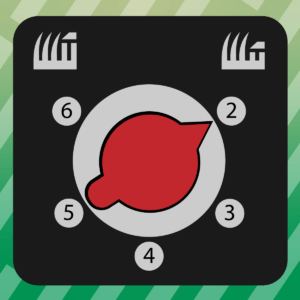
Cutting height
Being able to set the right cutting height is very important. Different lawns are suited to different lengths. Ornamental lawns should be around 1 inch (3cm), whereas lawns for playing and relaxing can be 1.5-2 inches (4-5cm) high. Most robotic lawn mowers can be set to keep lawns at 1-2.5 inches (2-6cm), which is enough for most.
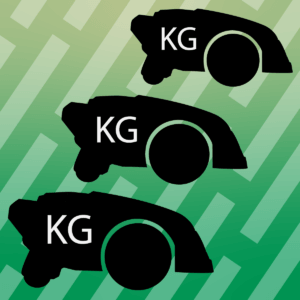
Size and weight
Size and weight matter if you’re going to be carrying your mower. More important, however, is the weight during the mowing process itself: very heavy models can leave unsightly traces of flattened grass on the mown lawn. That’s why we advise giving preference to a lighter robotic mower. Modern robotic mowers usually weigh less than 22 lb (10kg). The Bosch Indego S+ 350 Connect, for example, is a lightweight option at 16.5 lb (7.5kg).
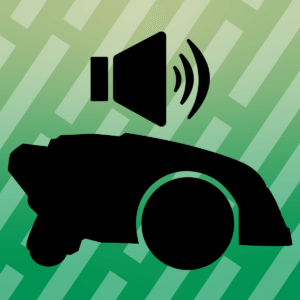
Loudness
Robot lawn mowers are considerably quieter than petrol and electric lawn mowers. Most models aren’t louder than 70 dB, making them part of a category you might call quiet gardening machines. If you have a big garden, you might find that your neighbours are annoyed as the robotic mower will take a long time to cut it all. If this is a problem, look out for models that are particularly quiet.

Charging time
All robotic mowers use lithium-ion batteries. However, unlike cordless hoovers, you don’t need to worry about charging. The robot charges itself automatically as soon as it starts running low. Power consumption depends on the model, but in general robotic lawn mowers are much more energy efficient than traditional lawnmowers.
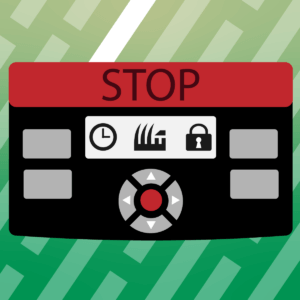
Display and UI
Basic settings such as date, time, operating times, and cutting height are entered via a display or control panel. A clear display and simple menu navigation are crucial. After all, no one wants to spend hours reading the operating instructions before they can use a device. The robot lawn mower should have a clearly visible stop switch so that the garden owner can switch off the device in an emergency.
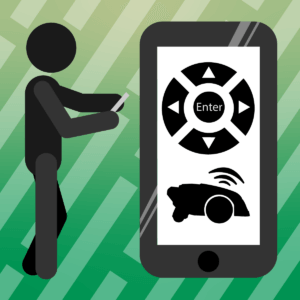
Control and programming
Robot lawn mowers are controlled by timers. Bluetooth connectivity is increasingly common in the market using a smartphone or tablet app. With this technology, it’s possible to control the mower without even touching it. As a rule, these apps are available on both iOS and Android. Some models are even voice assistant compatible, and it’s also an option to get a robotic mower with Wi-Fi connectivity (such as from Gardena or Husqvarna).

Wheels
Many robotic mowers are equipped with four wheels: two in the front and two in the rear. This design is more stable than the three-wheel variant, especially when mowing a slope. Garden owners looking for a model that is suitable for mowing on slopes should make sure that the rear wheels have a strong tread. This allows the robot lawn mower to drive safely downhill. For difficult terrain, manufacturers also offer additional equipment for the wheels. Husqvarna, for example, has an off-road kit in its range that improves the climbing performance of the robotic mower.
Area performance
When choosing a robotic mower, it is crucial to think about the size of your lawn and how often you plan on mowing it. After all, you don’t want a mower that can’t mow your entire garden. Manufacturers specify the maximum lawn area each of their models can mow, however, this figure is calculated assuming a robotic mower is cutting grass all day (13-24 hours depending on the model). If you limit how often a robotic mower is programmed to mow, then the real performance will be significantly less. However, most manufacturers will offer user guides to help set suggested schedules.
In order to calculate the real area a robot mower can cover, multiply its maximum area capacity with how long you plan for it to run, and then divide this by the time the manufacturer accounts for.
For example:
- Say your lawn is 300m²
- You want your robot lawn mower to cut the grass between 6 AM and 2 PM on weekdays, totalling 40 hours.
- The robotic mower you’re considering has a maximum area capacity of 1000m², but this is only if it is cutting grass for 18 hours a day. This totals 126 hours a week.
If this robotic mower is used for 40 hours a week, it will be able to cut just under 318m². In this way, this particular model is ideal for your needs. Robotic mowers with a larger area capacity are then better if you don’t plan on it working all the time.
For a short period of use, a model with a larger area capacity can be better than a cheaper one that mows less area. Otherwise, the robotic lawnmower may not be able to mow the entire lawn in the set operating time.
Gradients: when things can go wrong
If you’ve got a sloping lawn in your garden, you must pay attention to the climbing performance of your desired robotic lawn mower. Most models are capable of gradients from 25-35%. There are however gradient-specific models which can climb much steeper slopes. Many of the Husqvarna mowers available can cope with slopes of 40%, and their premium Automower 435X AWD claims to be able to even deal with 70% gradients.
An important thing to note is that these specifications always refer to the maximum potential of the machine under optimal conditions. If the gradient is at the edge of the mowing area, some mowers may struggle with it. For example, some mowers struggle with turning on slopes. If your boundary wire is on a slope, we recommend having the mower deal with no more than half of its projected gradient capacity.
Calculating your garden’s gradient
In order to calculate how steep your garden is, you need to measure the height and length of the slope.
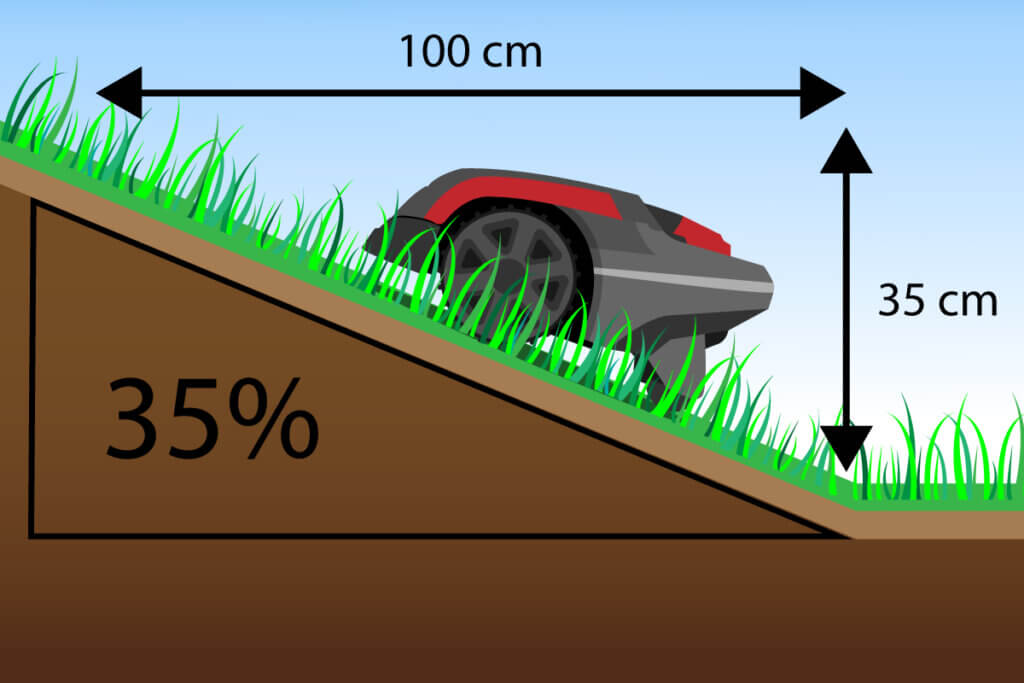
When doing this, make sure that the measurements determined have the same unit (i.e. only in centimetres or in metres). Then divide the height by the length. The value 0.35 corresponds to 35%. The slope of the terrain is therefore 35%.
The following devices can be of help for measuring height and distance:
- A long pole
- A tape measure
- A spirit level
Safety and protection with sensors
Robotic lawn mowers might sometimes look like remote controlled cars driving around on the lawn, but they have sharp blades rotating inside. Manufacturers are aware of the risks and equip their robots with safety sensors to reduce the risk of injury to a minimum. New robot lawn mowers should have the following safety sensors:
| Sensor | Function |
|---|---|
| Lift sensor | Stops the blades from spinning as soon as the device is picked up. |
| Tilt sensor | Stops the blades as soon as the device tilts or flips over. |
| Bump sensor/collision sensor | Senses the device has hit something and reverses. |
| Slope sensor | Changes direction or turns around if the gradient is too steep. |
| Obstacle sensor | Views obstacles and changes direction to avoid them. |
An emergency kill switch is useful to stop the blades from spinning instantly.
A child lock (for instance a PIN) is also a useful feature to make sure small children can’t turn the robot on.
With their safety sensors and robust design, robotic mowers are generally very safe. Nevertheless, you should make sure that the lawn is clear when the robot lawn mower is active. No objects should be lying around on the lawn. Small children or pets should also not play on the lawn unsupervised when the robot is on the move. The risk of injury is too big due to the razor-sharp blades, especially if curious small children get close to the mowers with their urge to touch and explore everything.
Is theft protection possible?
The same safety features detailed above also have an anti-theft function. If the robotic mower is lifted up, it automatically switches off thanks to the lift sensor. Then, the child lock also functions as an anti-theft PIN, as one cannot operate the device without the PIN. Some models also have an alarm which is set off if the mower gets taken out of the area or if the wrong PIN is used. Those models with GPS can use it to track the stolen device, making recovery possible.
The key to security is then a combination of these inbuilt features as well as a secure home itself. Potential thieves are always put off by motion detectors, alarm systems, and surveillance cameras.
What about bad weather?
Robot lawn mowers are rainproof and have no problem dealing with water. However, many models are equipped with a rain sensor, as manufacturers want to avoid any unnecessary stress or potential damage. The sensor ensures that the robot stops mowing and returns to the charging station as soon as it starts to rain.
In fact, there is some disagreement amongst experts as to whether robot lawn mowers should operate in rain. Mowing wet grass can lead to increased dirt build up and faster wear to the cutting blades. Similarly, when grass is wet it is easier to damage, especially with an older and heavier robotic lawn mower. Some devices become noisier when mowing wet grass and consume more energy. As a result, rain sensors are common. However, some experts claim that wet grass can be cut more gently and grows faster. If it rains for a long time and the grass isn’t cut, the lawn can grow so high that the automatic mower cannot cut it at all.
On some models it is possible to set the rain sensitivity, or even turn the rain sensor off completely. Robotic lawn mowers from Gardena haven’t got a rain sensor at all, and according to the company cutting wet grass in rain is completely fine. Of course, in the event of torrential rain, it’s a good idea to bring your robotic mower inside.
Wet mulching is a bad idea
Mowing your lawn with a robotic lawn mower when it is extremely wet is not a good idea. The reason for this is that robotic lawn mowers are mulching, meaning they leave the clippings on the lawn for fertilisation. Wet grass is heavier than dry grass, so if your lawn gets covered by wet grass several times in a row, the remaining grass won’t be able to breathe. Additionally, not enough light would reach the grass. If this happens, you might end up with patches of dead grass or discolouration of the lawn. If you have periods of very heavy rain, it might be worth reconsidering the schedule you have for your robotic lawn mower and switch to a conventional mower instead, which collects the clippings.
Winter protection
Don’t keep your robot lawn mower outside in deep winter. Freezing temperatures can damage the internal electronics and the battery. When the time comes, fully charge and clean the mower, and then bring it inside. The boundary wire on the other hand can stay outside – just clip the ends off and cover them with winter protection boxes or insulation tape.
Brand overview
There’s now a pretty big range of manufacturers making robotic lawn mowers, which can make deciding on one difficult.
Well-known manufacturers
The best-known brands are Gardena, Husqvarna, AL-KO, Worx, Robomow, Bosch, Honda, and Viking.
The first robotic lawn mower came to the market in 1995 from Swedish company Husqvarna. They are still going strong, and their Automower line of products is highly rated. Husqvarna’s products are in the top end of the market, starting at $1100 and rising to $5000. The award winning Automower 315 costs $1800. Aside from the basic entry level Automower 150, Husqvarna’s mowers have lots of additional features like app control and GPS. Their top of the range 435X AWD can handle gradients of up to 70%, which is market leading.
Gardena is globally known for their range of high-quality gardening tools. With their line of SILENO robotic mowers, Gardena offers the quietest devices on the market. Their noise level is only 58 dB. One of the most popular devices is the Smart SILENO+ robotic lawn mower, which can be controlled via an app. Pricing ranges from around $600 to just under $2000, putting them in the midrange.
Worx is a subsidiary of the global Positec Group, in the robotic lawn mower market with their Landroid range. They offer products that cover from 300 to 2000m². Their M700 Plus model was Europe’s top selling robotic mower in the 500-700m² range in 2020. The Landroid range is great for small and large gardens, and optional extras like voice control and anti-collision are possible.
Israeli company Robomow is a longstanding player in the market, announcing the Robomow Classic in 1997. The company has various product series depending on your needs. For 200-1200m² lawns, products from the RX and RC series are what we recommend. The compact RX models start at under $500, but the entry level device is designed for very small lawns (under 150m²). Easy to operate, Robomow devices have smart functions. However, it is important to note that the cheapest models from the brand do not use lithium-ion batteries – instead, they use lead-acid batteries. Higher up in the market, the RC series is designed for bigger lawns, with a price range in the thousands to match.
In most robotic lawn mower tests, you will find at least one product from Bosch. The range of the German manufacturer is not quite as extensive, but the devices are convincing with great performance. The current Bosch Indego models are recommended for small and medium-sized gardens and are priced between $600 and $1000.
With its Robolinho series, AL-KO offers high-quality entry-level machines for about $800. They are suitable for lawns of up to 500m². If you are looking for a robotic mower with more area performance and climbing ability, take a look at AL-KO‘s premium range. Their top of the range Robolinho can cover a 2000m² lawn, and costs $1900.
You might also want to have a small Honda roll over your lawn. The Japanese company’s Miimo range is designed for large gardens. Sitting in the upper price segment, their mowers start at just under $1000, with the top of the range Miimo 3000 costing $2750.
The iMow robotic mowers from Viking are also in the top of the range price segment. All eight variants cost more than $1000. The compact, green “grass frogs” are available for small, medium, and large lawns. The more expensive devices of this brand also have modern equipment with GPS tracking and smartphone control.
Images 1-11: © FinalCheck

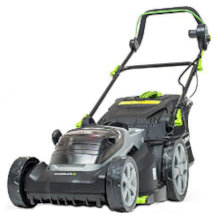
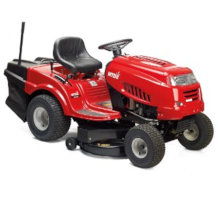
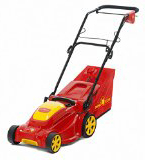
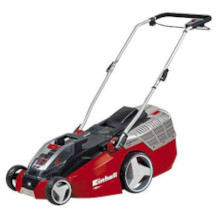

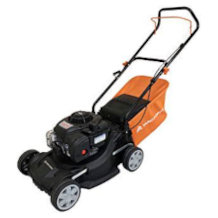
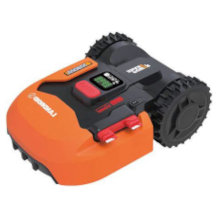





 74 reviews
74 reviews
